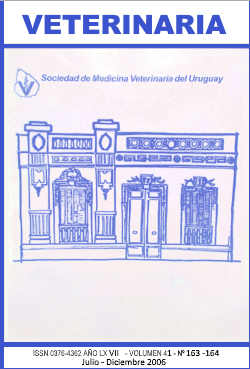Effect of energy supplementation and anionic salt supply during pre-labour on production and reproduction in grazing Holstein cows
Keywords:
Dairy cattle, Energy supplementation, Anionic salts, Production, ReproductionAbstract
The effect of anionic salt administration and energy supplementation during late pre-birth on productive and reproductive parameters and metabolic profiles in multiparous Holstein cows under grazing conditions was studied. We used 36 cows distributed in 3 groups with different treatments during the last three weeks before calving: natural field (Control); supplemented with: 3.5 kg/cow/day of broken corn (Energy); supplemented and anionic salts (Energy+Salts). The animals grazed in natural field improved with ad libitum hay. After calving, all animals received the same diet, consisting of grass and leguminous meadows, 12 kg/cow/day of corn silage and 4 kg/cow/day of a commercial concentrate. Body condition increased in groups E and E+S during ante- and post-partum, consistent with an increase in post-partum consumption. Production of 4% fat-corrected milk was higher in the energy-supplemented group, which was consistent with higher levels of postpartum non-esterified fatty acids (NEFA) indicating increased fat mobilization. Postpartum beta-hydroxybutyrate (BHB) levels increased for all groups, with no differences between treatments. Cholesterol showed a significant increase postpartum in all groups and levels were higher in group C. The addition of anionic salts did not result in differences in mineral or metabolic profiles between groups. The E+S group had a longer anestrus period than the Energy group, possibly due to a drop in consumption. The advantage of administering anionic salts under pastoral conditions, as they do not reflect changes in circulating mineral levels, is unclear.









